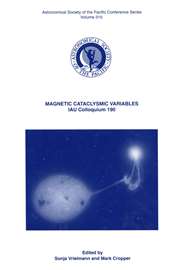No CrossRef data available.
Article contents
Features in the Soft X-ray Background
Published online by Cambridge University Press: 12 April 2016
Abstract
The soft X-ray background is explained in terms of emission coming from hot gas. Most of these soft X-ray data were obtained by proportional counters with a poor energy resolution. Instruments having the capability to resolve lines were only flown by two groups: a GSPC by a Japanese group and a SSD by a french-american collaboration. They both detected the 0 VII line emission coming from the soft X-ray background and so proved the thermal nature of the emission. The implications of these results on possible models for the local hot medium will be discussed. The same detectors observed part of the North Polar Spur. They detected emission lines coming from different species (0 VII,Fe XVII,Ne IX). Spatial variations of line ratios for this object could be due to non-equilibrium ionization effects.
Information
- Type
- 4. Supernova Remnants, Soft X-ray Background
- Information
- Copyright
- Copyright © Cambridge University Press 1990

